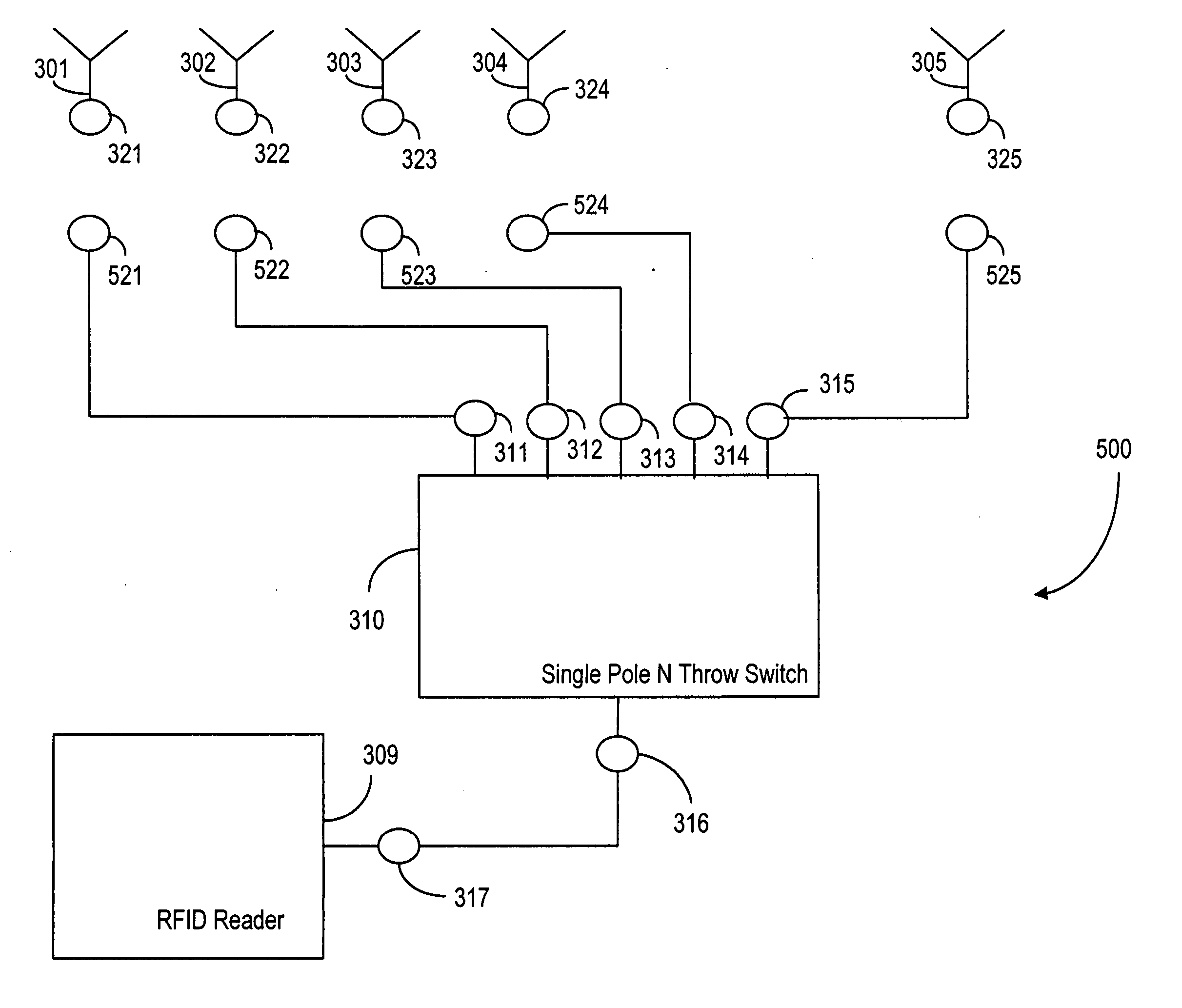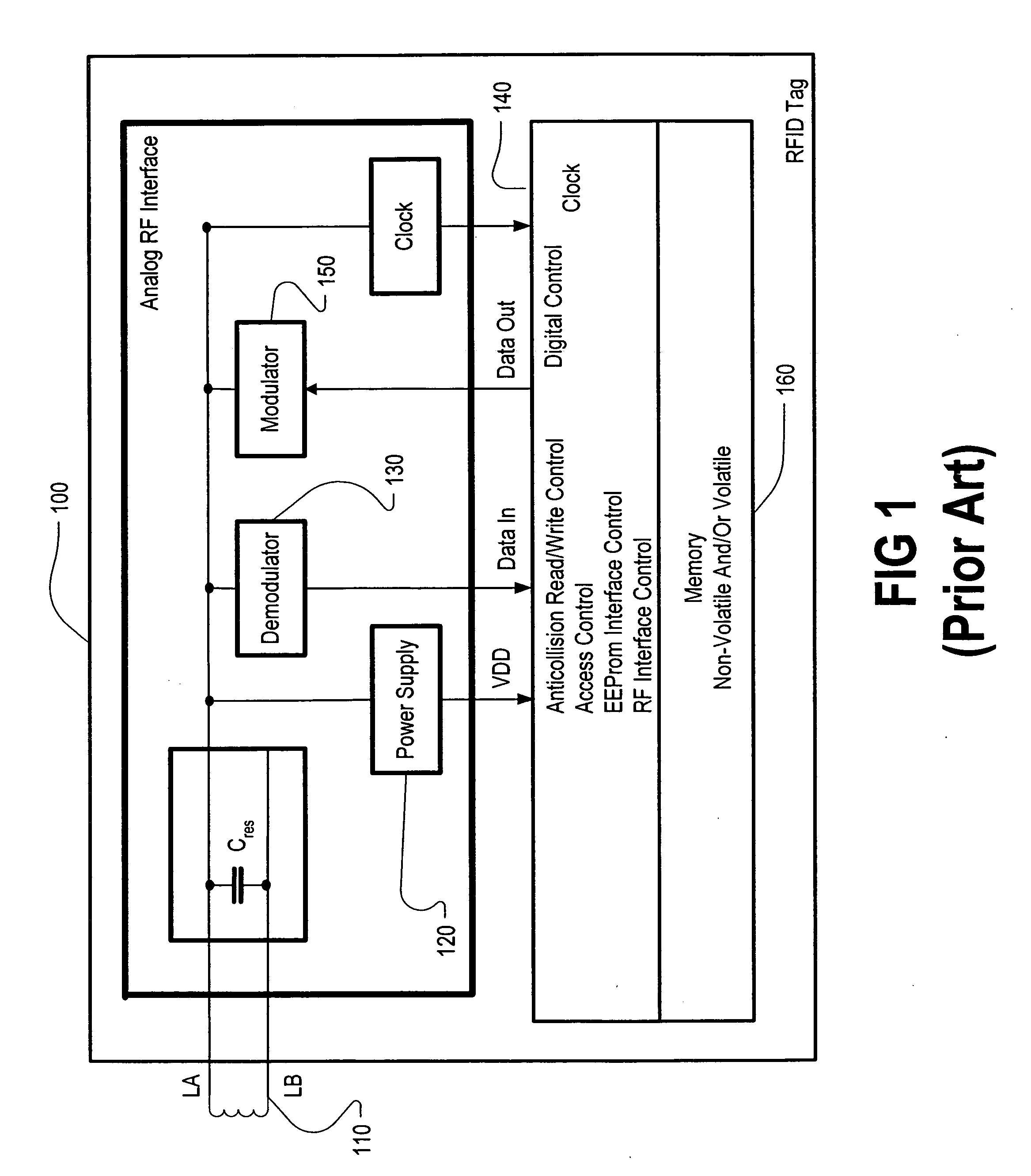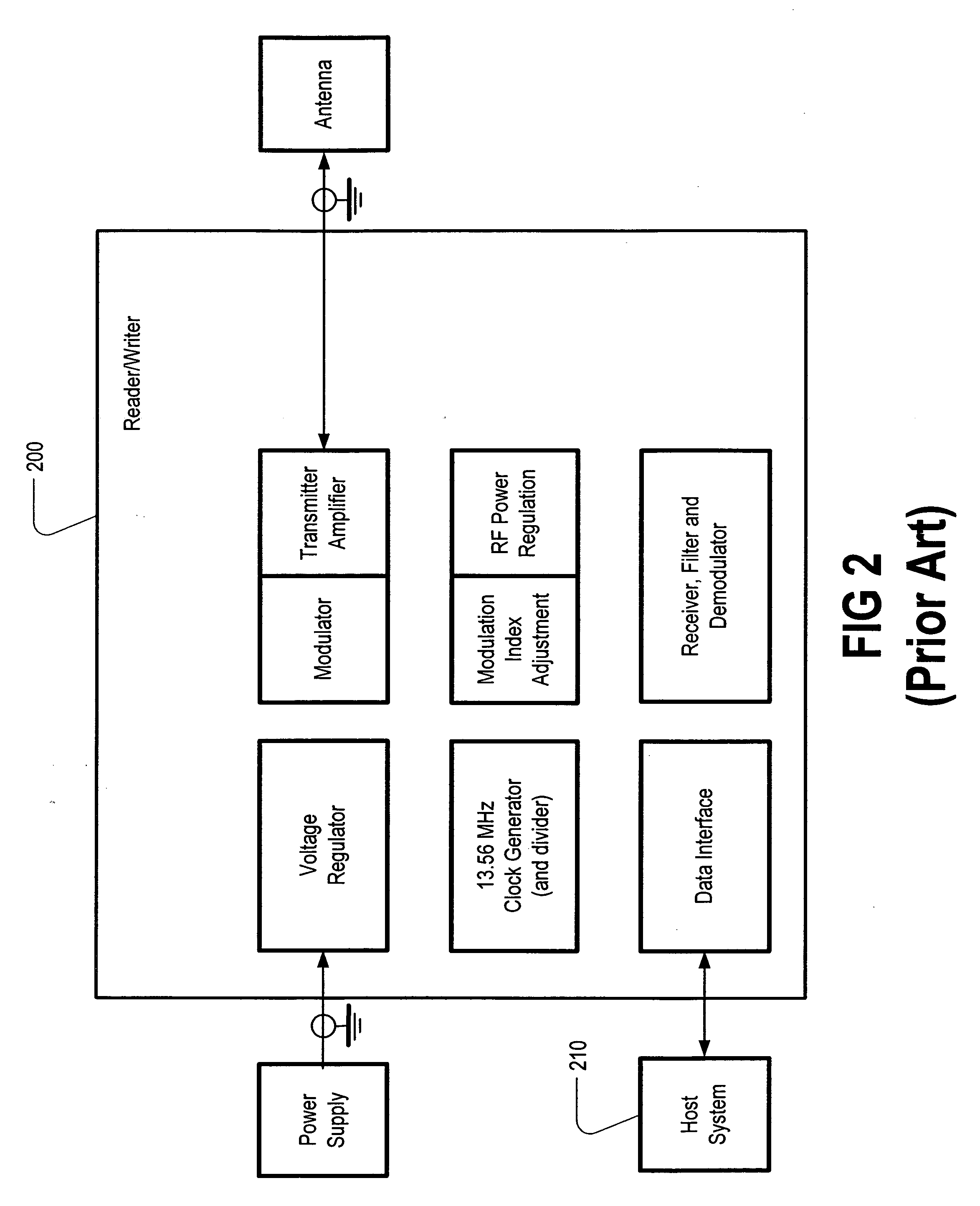Reconfigurable and replaceable RFID antenna network
a technology of radio frequency identification and antenna network, which is applied in the direction of burglar alarm mechanical actuation, burglar alarm by hand-portable article removal, instruments, etc., can solve the problems of user inability to modify the configuration of the rfid antennae to account for changing products, the reader antennae is fixed in place, and the contents of a volatile memory are lost, etc., to achieve the effect of convenient replacement and great functionality
- Summary
- Abstract
- Description
- Claims
- Application Information
AI Technical Summary
Benefits of technology
Problems solved by technology
Method used
Image
Examples
Embodiment Construction
[0025] The present invention provides a system that tracks and locates RFID tags. The preferred embodiment of the system includes a reader unit, a switch matrix comprising single pole multiple throw switches, reconfigurable and easily replaceable antennae, and a controller (computer) that communicates with the reader and controls the state of the switch matrix.
[0026] This preferred embodiment of the system also includes a shelf or multiple shelves such as those used in a cabinet, bookshelf, or electronic media shelving. The shelf contains products with RFID tags attached, and the RFID tags will be identified and located by the proposed system. The operating frequency of the preferred embodiment is 13.56 MHz, but the concept may also be applied to other frequency bands, such as UHF. Such a system may be used, for example, in medical cabinets to track such items as stents and pharmaceuticals. Other applications may include the tracking of library books, DVDs and other electronic medi...
PUM
 Login to View More
Login to View More Abstract
Description
Claims
Application Information
 Login to View More
Login to View More - R&D
- Intellectual Property
- Life Sciences
- Materials
- Tech Scout
- Unparalleled Data Quality
- Higher Quality Content
- 60% Fewer Hallucinations
Browse by: Latest US Patents, China's latest patents, Technical Efficacy Thesaurus, Application Domain, Technology Topic, Popular Technical Reports.
© 2025 PatSnap. All rights reserved.Legal|Privacy policy|Modern Slavery Act Transparency Statement|Sitemap|About US| Contact US: help@patsnap.com



